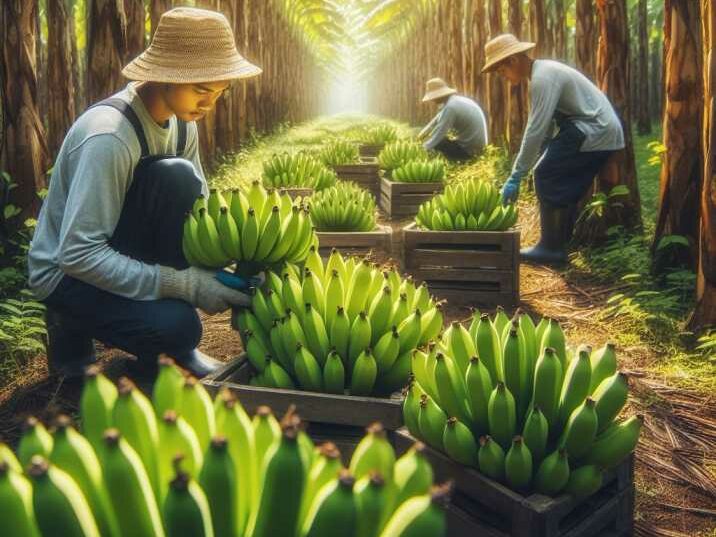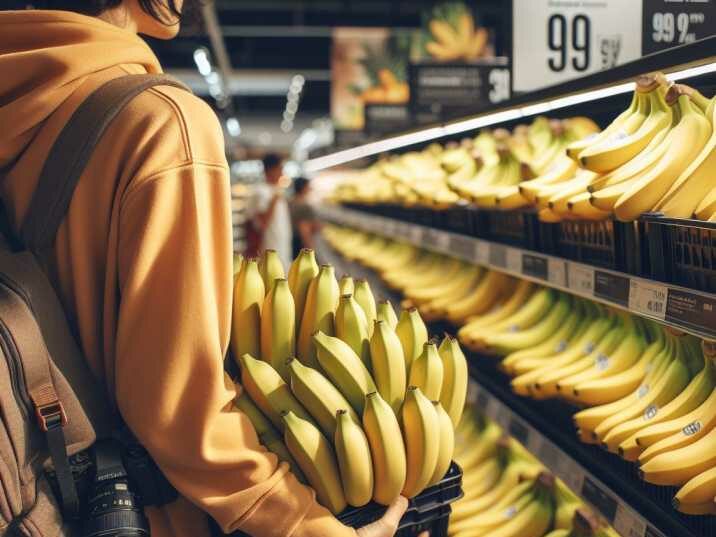Introduction:
Table of Contents
Cavendish bananas, the most consumed banana variety worldwide, undergo a remarkable journey from farms to tables globally. How are Cavendish bananas distributed and traded globally? Let’s delve into the intricate process of these bananas, totaling a staggering 6 million tons annually, are distributed and traded across the globe.
Cultivation and Harvesting:
Cavendish bananas are primarily grown in tropical regions such as Latin America, Southeast Asia, and Africa. These regions provide the ideal climate and soil conditions for banana cultivation. The bananas are carefully nurtured over several months until they reach optimal ripeness. Harvesting is done by hand to ensure minimal damage to the fruit.
Packaging and Transportation:
Once harvested, Cavendish bananas are meticulously packed in specially designed crates to prevent bruising and damage during transportation. These crates are then loaded onto refrigerated ships, ensuring that the bananas remain fresh throughout the journey.

Shipping and Distribution:
The journey of Cavendish bananas begins as they are shipped from their country of origin to various destinations worldwide. Major importing countries include the United States, European Union, China, and Japan. Upon arrival, the bananas undergo rigorous quality checks to ensure they meet international standards.
Wholesale Markets and Distribution Centers:
Upon clearing customs, Cavendish bananas are transported to wholesale markets and distribution centers across the globe. These centers act as hubs for distributing bananas to local retailers, supermarkets, and grocery stores. The bananas are carefully stored in temperature-controlled environments to maintain their freshness.
Retail and Consumer Markets:
From distribution centers, Cavendish bananas make their way to retail outlets and consumer markets. Whether it’s a neighborhood grocery store or a bustling supermarket chain, these bananas are readily available for consumers to purchase. Retailers often display bananas prominently due to their popularity among consumers.

Consumption and Waste Management:
Cavendish bananas are enjoyed by millions of people worldwide as a nutritious and convenient snack. However, like all perishable goods, some bananas may go to waste due to overripening or damage during transportation. Efforts are being made to minimize waste through initiatives such as composting and food donation programs.
Information-Based Table:
| Stage | Description |
|---|---|
| Cultivation | Bananas are grown in tropical regions such as Latin America, Southeast Asia, and Africa |
| Harvesting | Bananas are hand-harvested to minimize damage |
| Packaging | Bananas are packed in specialized crates for transportation |
| Transportation | Bananas are shipped in refrigerated containers to maintain freshness |
| Distribution | Bananas are distributed to wholesale markets and distribution centers worldwide |
| Retail | Bananas are sold in retail outlets and consumer markets |
| Consumption | Bananas are enjoyed as a nutritious snack by consumers worldwide |
Conclusion:
The global distribution and trade of Cavendish bananas involve a complex yet fascinating process that spans continents and oceans. From cultivation to consumption, millions of tons of these beloved fruits traverse the globe each year, enriching diets and delighting taste buds along the way.
FAQs:
- What makes Cavendish bananas the preferred choice for global trade? Cavendish bananas are favored for their uniform size, taste, and shelf life, making them ideal for long-distance transportation and international trade.
- How are Cavendish bananas transported without ripening too quickly? Cavendish bananas are transported in refrigerated containers to maintain their freshness and slow down the ripening process.
- Are there any challenges in the global distribution of Cavendish bananas? Yes, challenges include logistical issues, such as transportation delays and maintaining quality standards during long-distance shipping.
- What happens to bananas that don’t meet quality standards? Bananas that don’t meet quality standards may be sold at a lower price or processed into other products such as banana chips or puree.
- How can consumers reduce banana waste at home? Consumers can reduce waste by purchasing only what they need, storing bananas properly to extend their shelf life, and finding creative ways to use overripe bananas, such as making banana bread or smoothies.
